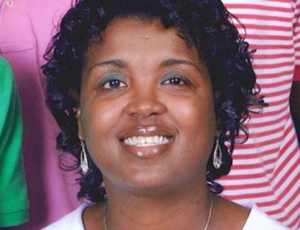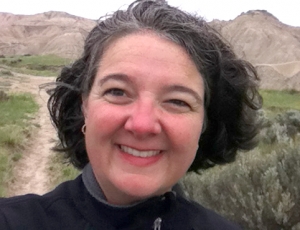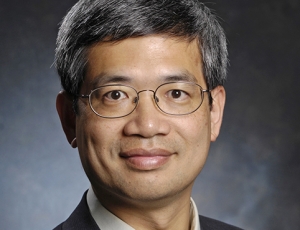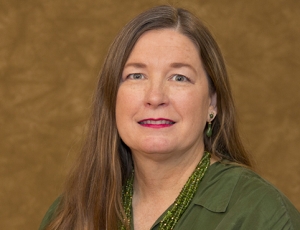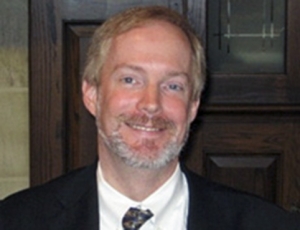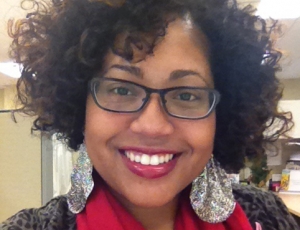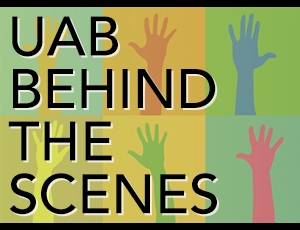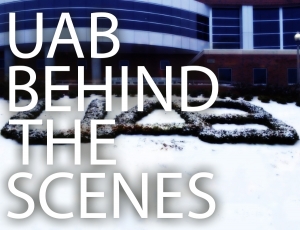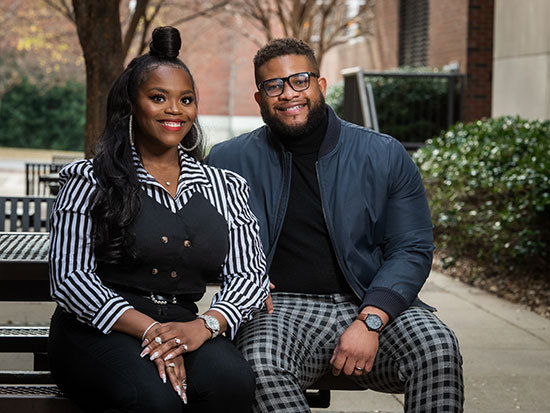 Bianca and Kelvin Ume have been pulling double duty throughout the pandemic: working as contact tracers while juggling full-time jobs as a medical student (Bianca) and an ICU nurse (Kelvin).
Bianca and Kelvin Ume have been pulling double duty throughout the pandemic: working as contact tracers while juggling full-time jobs as a medical student (Bianca) and an ICU nurse (Kelvin).
STEVE WOOD | University RelationsThere may be few people more qualified to share the truth about COVID than ICU nurse Kelvin Ume. Fresh out of nursing school in fall 2020, Ume was immediately hired on in a Birmingham hospital, where he cares for patients fighting to breathe from the effects of COVID. Many of them do not survive. In January 2021, before vaccines were widely available, Ume and his wife, Bianca — a student at the UAB Heersink School of Medicine and part of UAB's dual-degree M.D./MBA program — both contracted COVID themselves. She had a rough time for a week or so. He nearly died.
“It was pretty bad,” Kelvin admitted. “It took me a month to fully beat it and get my lungs back to normal.” While he recovered, Bianca sat up beside him and studied for her classes and board exams. She also kept managing the efforts of dozens of student contact-tracers working for the UAB School of Public Health, a role she has held since summer 2020. When he recovered, Kelvin went back to the ICU, caring for patients. And on the weekends, he was back to contact-tracing as well, as part of a team of part-time staff managed by Bianca’s counterpart, Daniel Williams, M.D. Even as the Delta variant surge swamped his hospital and health care facilities across the country, Kelvin continued to make his calls.
Each shift, Kelvin Ume and his fellow contact-tracers may call a dozen or more people who recently tested positive for COVID-19, letting them know about quarantine guidelines and asking them about friends, family or co-workers they may have been around in the past two weeks. Then they call those close contacts as well.
“We get lots of questions” about vaccines, Kelvin Ume said. “Some people tell me they’ve heard it will change their DNA or kill them or make them infertile. The good news is there is a lot of positive, factual research out there we can point them to. And I’m an open book about my own experience. I let people know what I have seen and what I went through.”
“Some people tell me they’ve heard [the vaccine] will change their DNA or kill them or make them infertile. The good news is there is a lot of positive, factual research out there we can point them to. And I’m an open book about my own experience. I let people know what I have seen and what I went through.”
—Kelvin Ume, investigator on the contact-tracing unit and critical care nurse
45,000 cases and counting
Through November 2021, more than 189 undergraduate, medical and graduate students at UAB, and a similar number of part-time staff, have completed some 45,000 case investigations for the Alabama Department of Public Health (ADPH).
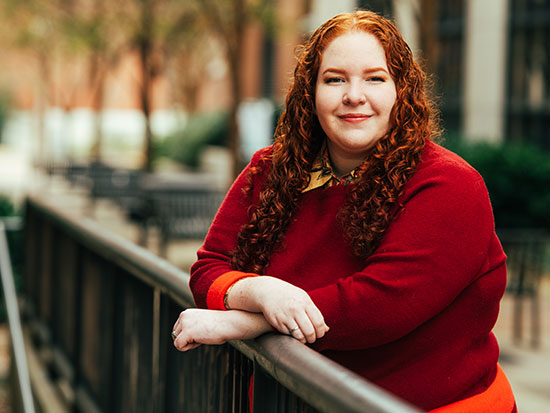 Contact-tracing is not for the faint of heart. “It can be easy to get burned out in this job, especially when you get difficult cases,” said Joanna Broyles, a senior lead investigator on the contact-tracing team who also is a graduate student in health behavior at the School of Public Health. But it is also "a once-in-a-lifetime opportunity to be hands-on in something historic in public health."
Contact-tracing is not for the faint of heart. “It can be easy to get burned out in this job, especially when you get difficult cases,” said Joanna Broyles, a senior lead investigator on the contact-tracing team who also is a graduate student in health behavior at the School of Public Health. But it is also "a once-in-a-lifetime opportunity to be hands-on in something historic in public health."
STEVE WOOD | University Relations“The dedication of these students and staff is really amazing,” said Andrew Rucks, Ph.D., professor emeritus in the School of Public Health’s Department of Health Care Organization and Policy. In July 2020, the School of Public Health signed a contract with the ADPH to assist with contact-tracing efforts statewide. Rucks is principal investigator for the contract, which covers 65 of Alabama’s 67 counties. (Jefferson County and Mobile County have their own health departments and contact-tracers. The Alabama Department of Public Health also has some contact-tracers on its staff, Rucks notes.)
Bianca Ume (formerly Bianca Godwins) manages the student contact-tracers, while Williams, a retired internal medicine physician, manages the part-time staff.
“They have done a tremendous job,” Rucks said. When the contact-tracers cannot get in touch with a contact after two tries, they send a letter to the person’s home address. One of the student investigators, who leads the letter-writing team, had to leave Birmingham and move home to New Mexico to care for his ailing mother last fall. “Even while he was on the road traveling back there, he would stop and do the letter-writing work,” Rucks said. The student later applied to graduate school and was accepted to a program at Johns Hopkins University. “He sent me an email from Baltimore and asked if he could continue on the project, and he’s done wonderfully,” Rucks said.
“In the mornings and afternoons, I go to the hospital, and then in the evenings I work on contact tracing.… I can feel the fatigue and the stress; but honestly, contact-tracing is still a motivator to me. On a day-to-day basis, you are speaking to people from across the state, helping to answer their questions and connect them to critical information.”
—Bianca Ume, manager of the contact-tracing unit and third-year medical student at the UAB Heersink School of Medicine
“Still a motivator”
This summer, Bianca Ume started her third year of medical school, which involves a grueling series of rotations through clinical units around UAB Hospital. “In the mornings and afternoons, I go to the hospital, and then in the evenings I work on contact tracing,” she said. Rucks is continually impressed with her dedication. “She stuck with this project even during the intensity of her medical education,” Rucks said. “She took a week off to take her placement exams and that’s about it.”
“Balancing it all is something I am still trying to perfect,” Bianca Ume said. “I can feel the fatigue and the stress; but honestly, contact-tracing is still a motivator to me. On a day-to-day basis, you are speaking to people from across the state, helping to answer their questions and connect them to critical information.”
Two other contracting organizations participated in contact tracing in Alabama in 2020 and the early part of this year; but as of June 2021, the UAB team has had the responsibility all to itself.
That change coincided with the Delta variant surge that pounded UAB Hospital and other health care facilities across the state this summer. “Right now, we can do 100 to 250 cases per day on a great day, but we’re getting up to 300 new cases a day from ADPH based on test results,” Williams said in mid-December. The spread of the Omicron variant means this number is likely to surge again.
“It’s totally worth it in the end. It has made me even more passionate to fight for the little guy, to fight for the resources that people in our communities need to live better lives.”
—Joanna Broyles, senior lead investigator on the contact-tracing unit and a graduate student in health behavior at the UAB School of Public Health
“Once-in-a-lifetime opportunity”
Many of the contact-tracers have been part of the project since the beginning. And despite the frustrations, they say they are not ready to give up now.
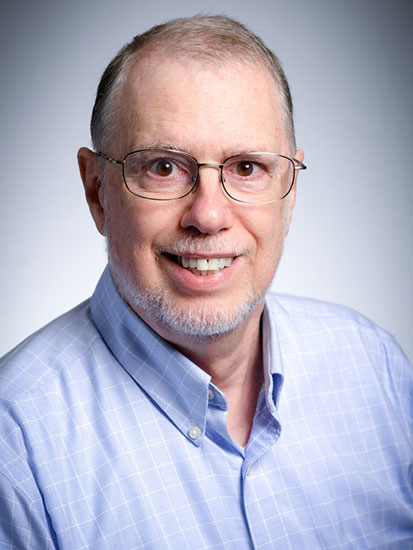 “We have people from all types of backgrounds,” said Daniel Williams, M.D., a retired internal medicine physician who manages staff on the contact-tracing unit. “We have nurses, we have retirees who work four to five hours for a day, and others who work the whole week.” “It can be easy to get burned out in this job, especially when you get difficult cases,” said Joanna Broyles, a senior lead investigator on the contact-tracing team who also is a graduate student in health behavior at the School of Public Health. Then there is the pace of the work brought on by Delta: Contact-tracers work on 10 to 12 cases per shift, on average. Despite the frustrations of being hung up on or chewed out, and the mountain of cases piling up, Broyles has been an enthusiastic part of the project since its inception and would not dream of bowing out. “This is a once-in-a-lifetime opportunity to be hands-on in something historic in public health,” she said. “It’s totally worth it in the end. It has made me even more passionate to fight for the little guy, to fight for the resources that people in our communities need to live better lives.”
“We have people from all types of backgrounds,” said Daniel Williams, M.D., a retired internal medicine physician who manages staff on the contact-tracing unit. “We have nurses, we have retirees who work four to five hours for a day, and others who work the whole week.” “It can be easy to get burned out in this job, especially when you get difficult cases,” said Joanna Broyles, a senior lead investigator on the contact-tracing team who also is a graduate student in health behavior at the School of Public Health. Then there is the pace of the work brought on by Delta: Contact-tracers work on 10 to 12 cases per shift, on average. Despite the frustrations of being hung up on or chewed out, and the mountain of cases piling up, Broyles has been an enthusiastic part of the project since its inception and would not dream of bowing out. “This is a once-in-a-lifetime opportunity to be hands-on in something historic in public health,” she said. “It’s totally worth it in the end. It has made me even more passionate to fight for the little guy, to fight for the resources that people in our communities need to live better lives.”
“We have people from all types of backgrounds,” Williams said. “We have nurses, we have retirees who work four to five hours for a day, and others who work the whole week.” Before the pandemic, Williams worked as a research interviewer in the School of Public Health’s Survey Research Unit, which conducts some 40,000 surveys per year for investigators at UAB as well as local and state health departments and other state and national agencies. “Contact-tracing has been a great opportunity to help out — to be part of doing public health in a new way,” Williams said.
“I was attracted to contact-tracing because I knew I would be involved in helping to stop the spread of COVID-19,” said Etzel Gonzalez, a member of the Survey Research Unit who has been a lead contact tracer since July 2020. Because of her grasp of the language, “I have the privilege of working with the Spanish-speaking community,” she said. “By informing them of the importance of the 14-day quarantine [after a positive COVID test], I can encourage them to quarantine correctly.”
“Contact-tracing has been a great opportunity to help out — to be part of doing public health in a new way.”
—Daniel Williams, M.D., manager of the contact-tracing unit and supervisor for the Survey Research Unit in the School of Public Health who is a retired internal medicine physician
Building trust — quickly
Is there an ideal personality for contact tracers? “The people who are more gregarious and lighthearted seem to do well, because they are usually quick enough to adapt to the respondents, who may not be in a good mood because they are not feeling well,” Williams said.
There is an art to rapidly building rapport with someone over the phone, Broyles says. “You have to convince them you are not a telemarketer or a scammer,” she said. “As you get more seasoned, you have a higher response rate.”
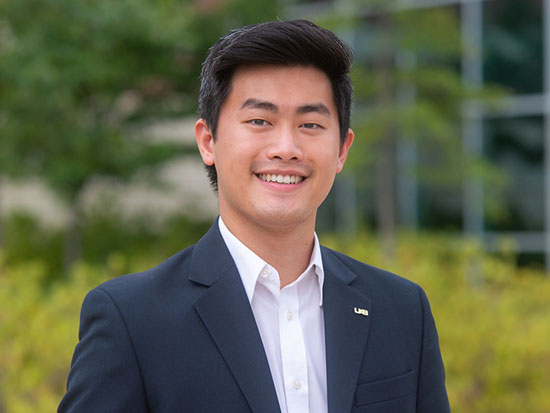 "We're always evolving," said Tyler Huang, a senior lead investigator and UAB alumnus who is continuing to work on the contact-tracing team while he takes a gap year before medical school. "We've worked hard to establish trust with our patients and revamped our scripts to accomplish that."
"We're always evolving," said Tyler Huang, a senior lead investigator and UAB alumnus who is continuing to work on the contact-tracing team while he takes a gap year before medical school. "We've worked hard to establish trust with our patients and revamped our scripts to accomplish that."
LEXI COON | University Relations“We build really good practices into our training and we’re always evolving,” said Tyler Huang, a senior lead investigator who manages a team of six to eight students per shift. “We’ve worked hard to establish trust with our patients and revamped our scripts to accomplish that.” Huang graduated from UAB in spring 2021 with a bachelor’s degree in neuroscience and a master’s degree in multidisciplinary biomedical sciences. Instead of going straight to medical school, as he originally planned, Huang is taking a gap year to continue working on the contact-tracing team and to study vaccine distribution processes within the state. “I heard about the opportunity from some friends who were students in the School of Public Health,” he said. “My professional interests align with health disparities and health care access.” But the work tugs at his personal interests as well. Huang is from Fayette, a small town in west central Alabama, not far from the border with Mississippi. “I am originally from a very rural community where health literacy is not discussed,” he said. “That’s what drew me to this — giving back and helping our state.”
The questions that contact-tracers are asked have changed over the course of the pandemic, Bianca Ume says. “People are more willing to speak with us” now than when the program first started last summer, she explained. “There is less stigma and fear about receiving a call from us than in the beginning. It’s less of a shock. People are more aware of COVID, and they have internalized more of the information about isolation and quarantine.”
“People are asking more questions about vaccine boosters, or what it means if they have been vaccinated and are the close contact of someone who tested positive,” Huang said.
“I am originally from a very rural community where health literacy is not discussed. That’s what drew me to this — giving back and helping our state.”
—Tyler Huang, senior lead investigator on the contact-tracing unit and a UAB alumnus
Connecting people to vaccination
Before the Delta variant surge took over, the UAB contact tracers added a new role: helping connect people to vaccination. “In the spring, with the decline in cases, we started to ask, ‘What else can we do with this trained workforce?’” Rucks said. “It occurred to me that we could try to help improve the vaccine percentage in the state.” The school had phone numbers for thousands of Alabamans who had been close contacts of persons who had tested positive for COVID-19 throughout the pandemic. What if their investigators called and offered to set them up with vaccine appointments and answer any questions they had?
Rucks talked over his proposal with Paul Erwin, M.D., dean of the School of Public Health, and his contacts at the ADPH, who were enthusiastic. “This entire project would not be the success it is without the wholehearted support of Dean Erwin,” Rucks said.
Bianca Ume spent much of the summer studying for her board exams while developing the processes and protocols for executing this new state-wide vaccination assistance program, which began in May 2021. The group was provided a list of 100,000 contacts across the state by ADPH to begin facilitating vaccination appointments at the contacts’ closest vaccine sites. Alongside Ume, a team that included Rucks, Williams, Broyles, Shima Anwar, M.D., Ph.D., Phillip Braswell, M.D., Claudia Datnow-Martinez and Kristina Redd developed working scripts for the investigators by collecting succinct answers to the most prevalent misinformation and myths about vaccination from the Centers for Disease Control and Prevention and the ADPH.
“A lot of people have theories about what the vaccine is and what it can do to the body. Some people are still very hesitant to learn about the vaccine, much less get vaccinated, but we hope to change this.”
—Etzel Gonzalez, lead investigator on the contact-tracing unit and a member of the Survey Research Unit
Countering vaccine myths
“A common one is that the vaccine will cause you to become infertile, or that it will change your DNA,” Gonzalez said. Spanish speakers have similar questions and concerns to the English-speaking community, she says. “A lot of people have theories about what the vaccine is and what it can do to the body. Some people are still very hesitant to learn about the vaccine, much less get vaccinated, but we hope to change this.”
“When there are people who were vaccinated who end up testing positive, they are sometimes afraid that they will have a bad case because they have COVID in their blood,” Kelvin Ume said. “I can let them know that the vaccines decrease your risk of being hospitalized, even if you do get COVID. It completely enhances your survival. And I see that in the ICU, where most of our patients are unvaccinated.”
Although the dedicated vaccine calls had to take a back seat during the Delta surge, Bianca Ume encourages her contact-tracers to ask about vaccination when they can. When their contacts are open to vaccination, the UAB callers offer to help make them appointments at the closest location offering shots, which they look up using the contact’s ZIP code on the website vaccinefinder.org.
These interactions are energizing in the midst of her medical studies, Bianca Ume says. “It’s like a light at the end of the tunnel, to step away from med school and the monotony of study and get immersed in real-life experience,” she said. “When you are in school it is easy to get hyper-focused on what you are doing. To step aside from that and talk to people from across the state, to see what they are experiencing. We are getting the word out and actively striving for real change — a return to a new normal.”
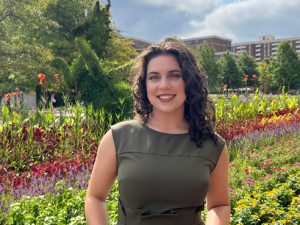
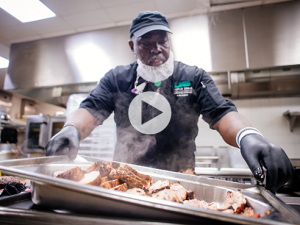
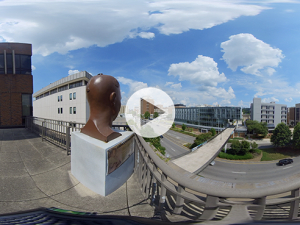
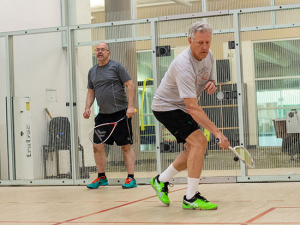
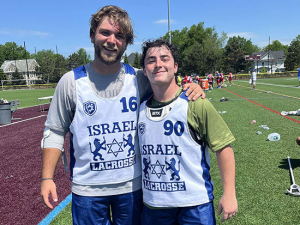
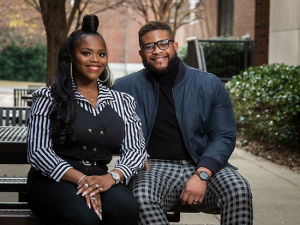
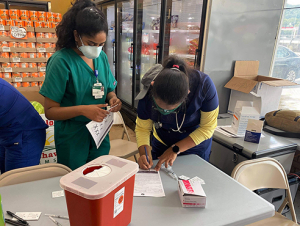
 The student-led group partnered with the Alabama Statewide Area Health Education Centers program to distribute Pfizer vaccine doses.
The student-led group partnered with the Alabama Statewide Area Health Education Centers program to distribute Pfizer vaccine doses.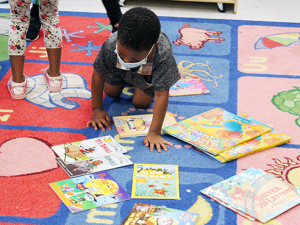
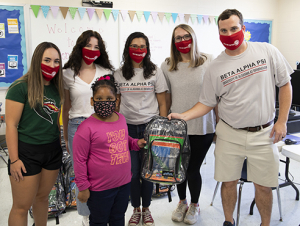
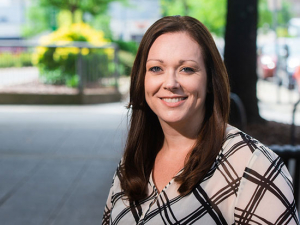
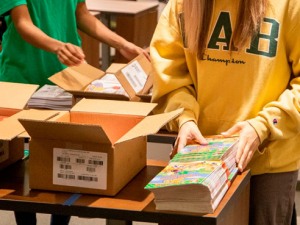
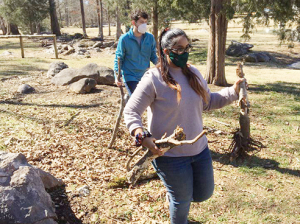
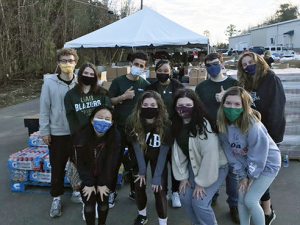
 Fifteen students helped sort and prep donated items and distribute them at the Gardendale Civic Center drive-thru.
Fifteen students helped sort and prep donated items and distribute them at the Gardendale Civic Center drive-thru.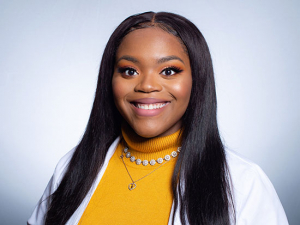
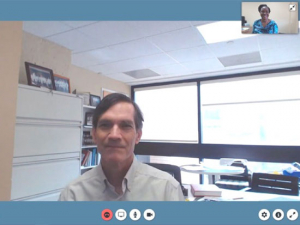
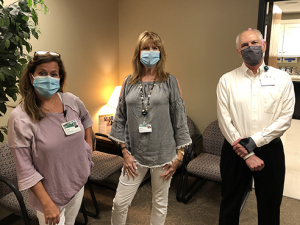
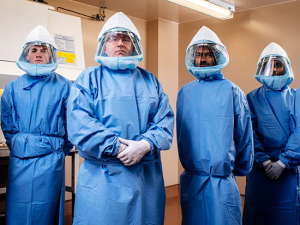
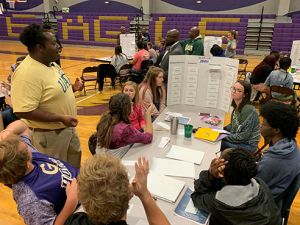
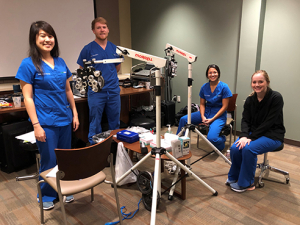
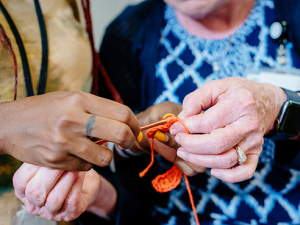
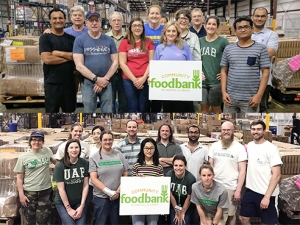
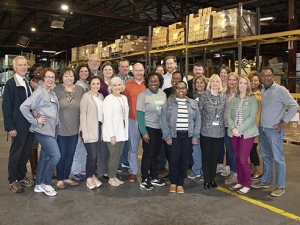
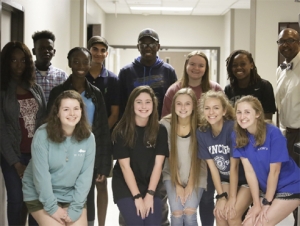
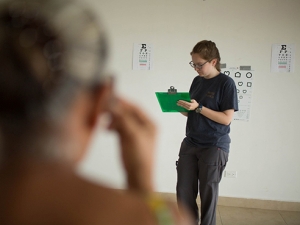
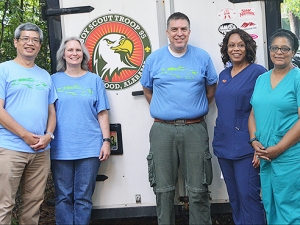
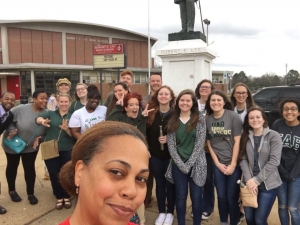
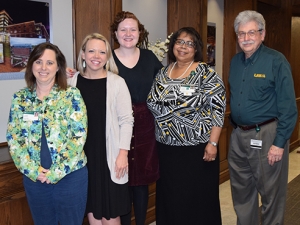
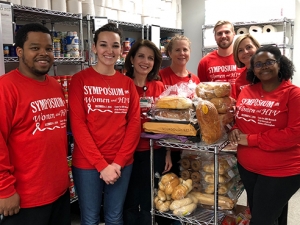
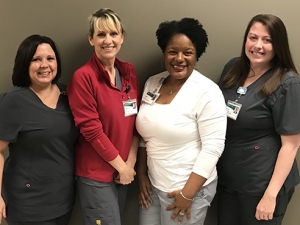
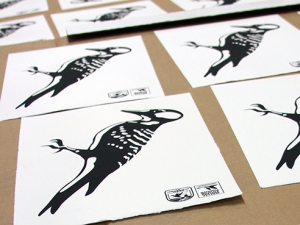
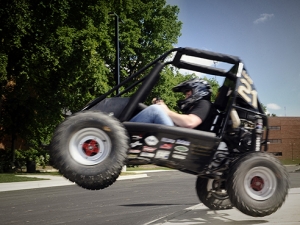
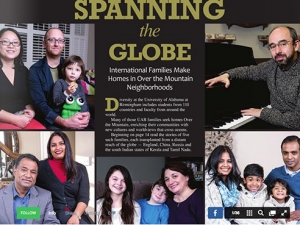
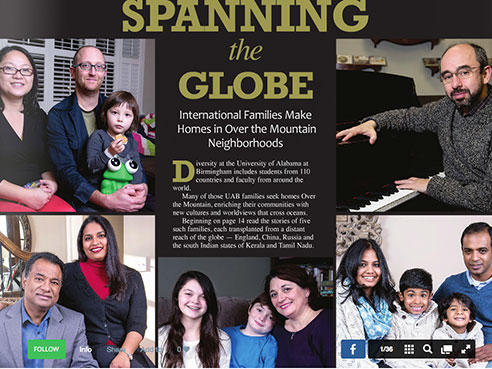 UAB’s ability to recruit employees worldwide adds promotes diversity in Birmingham and surrounding areas. Meet these five families featured in the paper’s Jan. 15 issue of the “
UAB’s ability to recruit employees worldwide adds promotes diversity in Birmingham and surrounding areas. Meet these five families featured in the paper’s Jan. 15 issue of the “